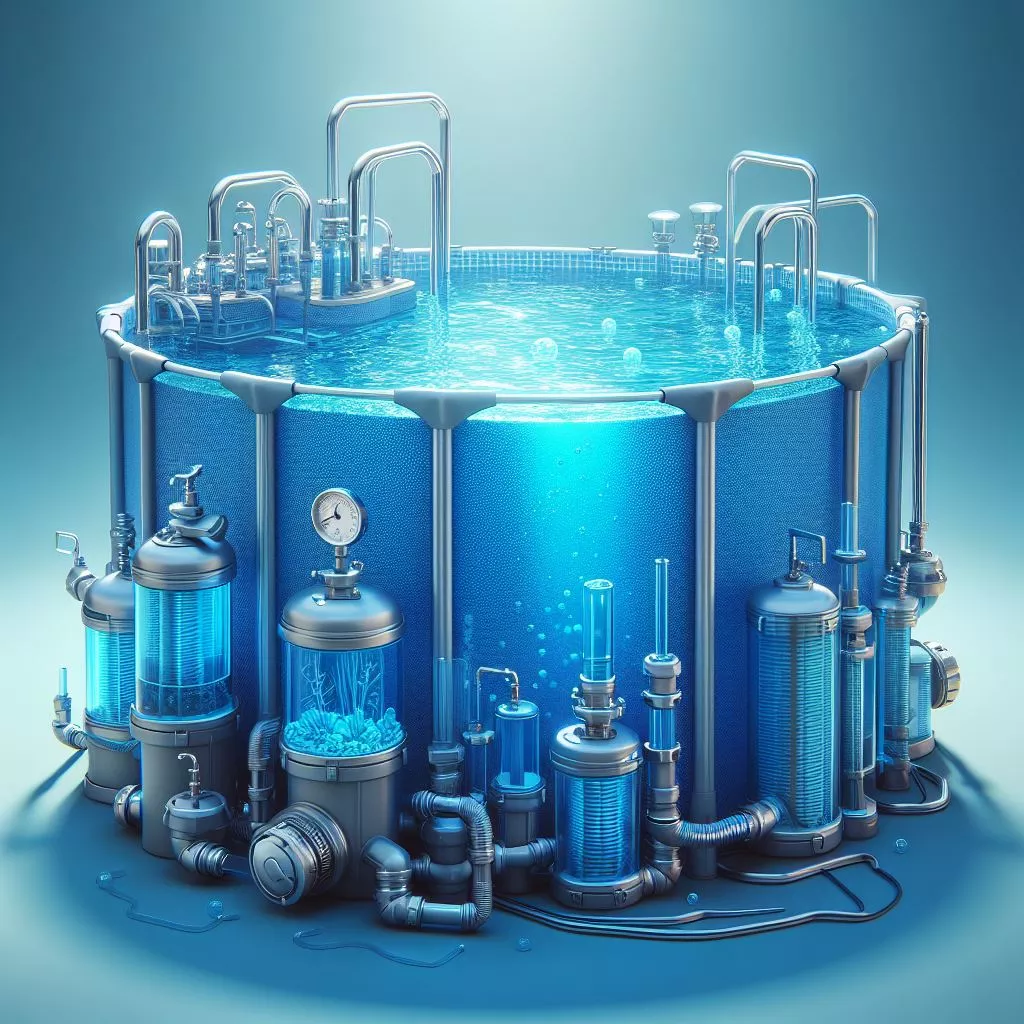Swimming pools, whether public or private, serve as oases of joy and relaxation. However, maintaining the crystal-clear and healthy water that swimmers enjoy involves a sophisticated water filtration cycle, at the heart of which lies the sand filter. Sand filters have been a cornerstone of pool water purification for decades, offering a simple yet effective means to keep water clean and safe for swimmers. This article explores the critical role that sand filters play in the swimming pool water filtration cycle, highlighting their function, benefits, and impact on maintaining pool water quality.

The Mechanics of Sand Filtration
Sand filters operate on a simple principle: water is propelled through a bed of sand where contaminants are trapped between the sand grains. The filter consists of a large tank filled with specially graded sand, designed to catch particles as small as 20 to 50 microns in size.
Filtration Process: The pool’s pump pushes water into the top of the filter tank and down through the sand bed. As water passes through the sand, contaminants are captured by the sand grains. The cleaned water then exits the bottom of the filter and is returned to the pool.
Backwashing: Over time, the sand becomes clogged with trapped debris, causing the water flow to slow down. Sand filters are equipped with a backwashing feature, which reverses the water flow to clean the sand bed, flushing out trapped debris through a waste line.
Integration into the Pool’s Circulation System
Sand filters are a critical component of the pool’s circulation system, which includes the pump, filter, heater (if applicable), and chemical feeder. The system works in a continuous cycle, with the sand filter playing a pivotal role in maintaining water clarity and hygiene.
Circulation and Filtration: The pool pump draws water from the pool, which then passes through the sand filter before being heated, chemically treated, and returned to the pool. This cycle ensures that the pool water remains clean, clear, and safe for swimming.
Benefits of Sand Filters
Effectiveness: Sand filters efficiently remove dirt, algae, and microorganisms, significantly improving water clarity and quality.
Low Maintenance: Compared to other filtration methods, sand filters require less frequent cleaning thanks to the backwashing process. This not only saves time but also reduces water usage over time.
Durability and Cost-effectiveness: Sand filters are known for their durability and long service life. The initial investment is quickly offset by the low operating and maintenance costs.
Eco-Friendly: The process of sand filtration and backwashing is more environmentally friendly compared to other filtration methods, as it reduces the need for chemical cleaners and saves water.
Impact on Pool Maintenance and Water Quality
Consistent Water Quality: By effectively removing contaminants, sand filters ensure that pool water remains consistently clean, clear, and safe for swimming.
Reduced Chemical Usage: With efficient filtration, the need for chemical treatments to maintain water quality is minimized, leading to a more natural swimming experience and less exposure to chemicals for swimmers.
Prevention of Algae and Bacteria Growth: By trapping debris and microorganisms, sand filters play a crucial role in preventing the growth of algae and bacteria, which can lead to cloudy water and health hazards.
Conclusion
The role of sand filters in the swimming pool water filtration cycle is indispensable. Through their efficient operation, ease of maintenance, and contribution to water quality, sand filters ensure that swimming pools remain clean, safe, and inviting. As technology advances, the basic principle of sand filtration continues to stand the test of time, proving that sometimes, the simplest solutions are the most effective. For pool owners and operators, understanding and properly maintaining their sand filter system is key to achieving and sustaining optimal water conditions, making every swim a refreshing and enjoyable experience.
